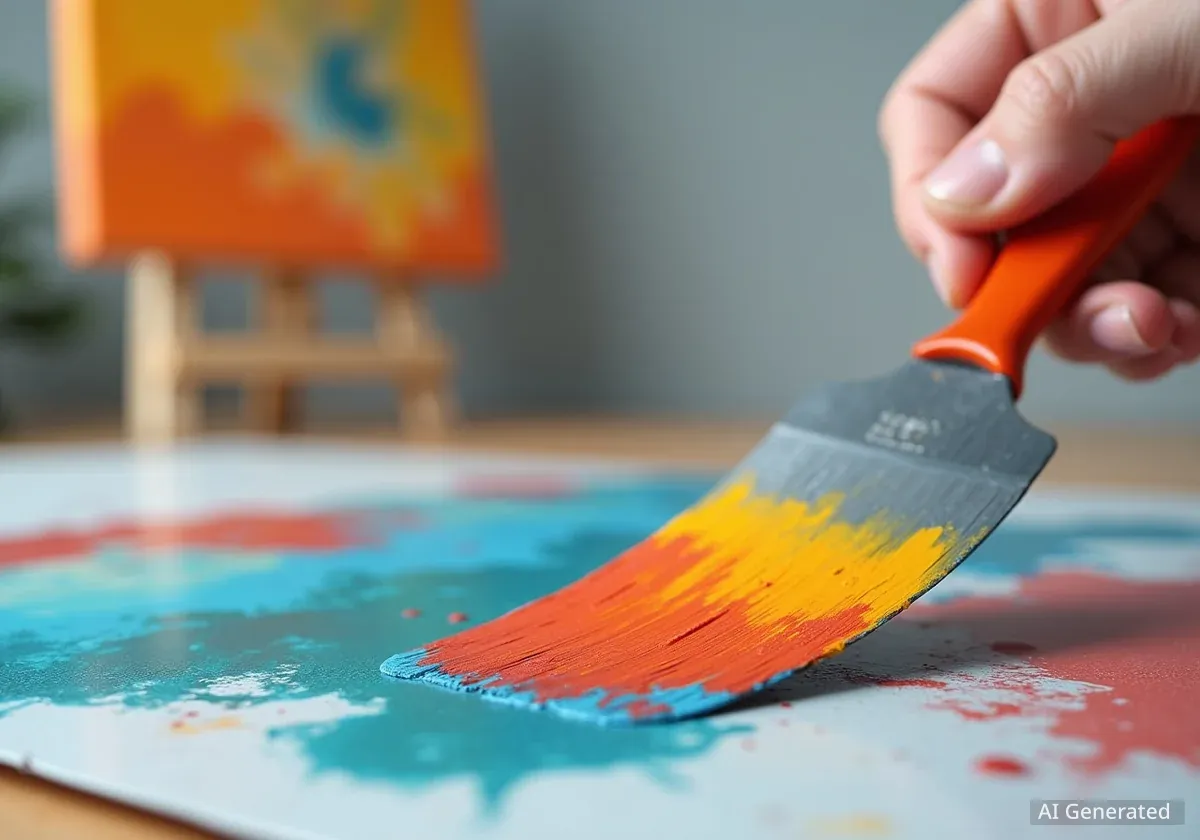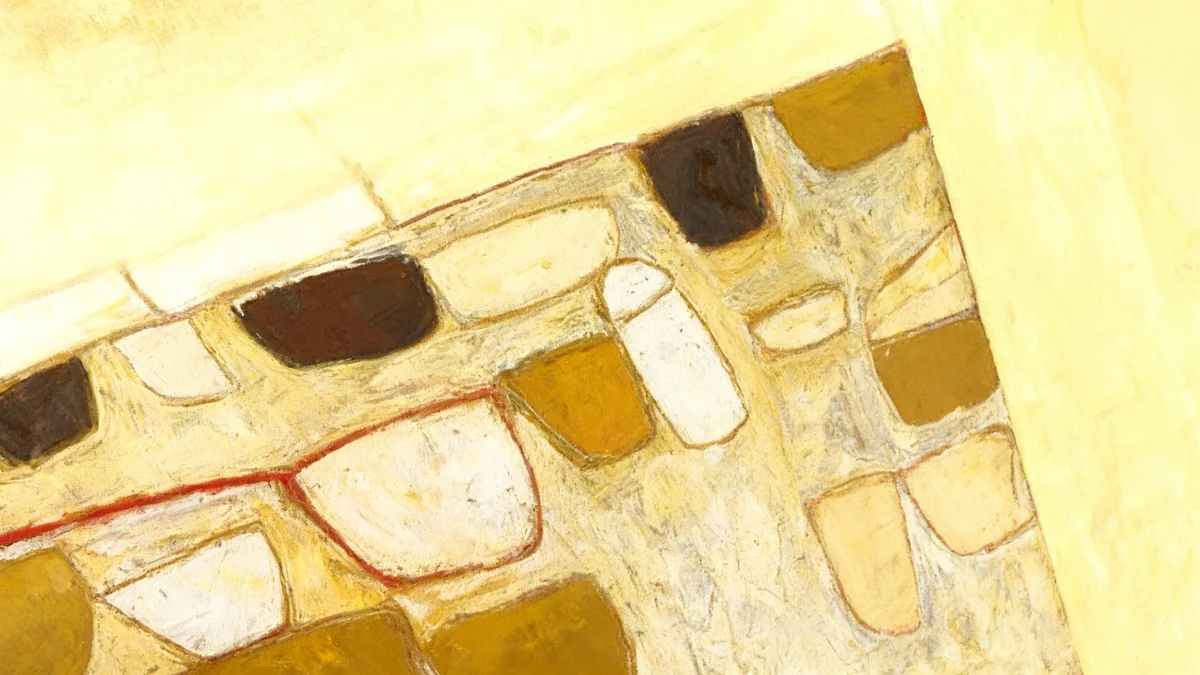Artist Pat Lipsky, 84, is receiving renewed attention for her abstract color-field paintings. A new solo exhibition, "Color Next to Color," opens on October 9th at James Fuentes in Tribeca, New York. This show coincides with the upcoming release of her memoir, Brightening Glance: Recollections of a New York Painter, set for 2025. Both the exhibition and the book highlight Lipsky's lifelong dedication to exploring the power of color in her art.
Key Takeaways
- Pat Lipsky, 84, has a new solo exhibition, "Color Next to Color," at James Fuentes.
- Her memoir, Brightening Glance: Recollections of a New York Painter, will be released in 2025.
- The exhibition features both new and older abstract color-field works.
- Lipsky's artistic journey began in childhood and was shaped by mentors like Tony Smith.
- She developed a unique, instinctual approach to color, rejecting formal color theory.
- Her early career included representation by influential dealer André Emmerich.
- Lipsky has recently returned to her signature acrylic stain painting technique.
A Lifetime Engagement with Color
Lipsky's fascination with color began at an early age. She recalls a moment in second grade during a watercolor class. Her teacher held up her painting, declaring, "Look at Pat's beautiful colors!" Lipsky joked that this moment, more than 70 years ago, "ruined my life!" This early experience set the course for her artistic career, focusing on how different hues interact and balance on canvas.
Her abstract color-field canvases are characterized by strong contrasts. Colors collide and find a delicate equilibrium, driven by her instinct rather than strict rules. Lipsky describes a "magical moment" when her materials seem to come alive during the creative process. This intuitive approach has defined her work for decades.
Understanding Color-Field Painting
Color-field painting is a style of abstract art that emerged in New York City during the 1940s and 1950s. It focuses on large fields of solid color, often applied thinly, to create a flat, expansive surface. Artists in this movement typically sought to evoke emotional or meditative responses through color and its interactions, rather than through form or narrative.
Early Influences and Academic Path
After completing her undergraduate studies at Cornell University, Lipsky pursued a master's degree at Hunter College. There, she found a significant mentor in the renowned sculptor Tony Smith.
"As a teacher, he was just incredibly engaging," Lipsky recalled. "He would sit down right next to you, no matter what you were working on—even if it was the dumbest picture you ever saw—and he would just talk to you. That was so touching to me."
Though her program was designed for one year, Lipsky extended her stay for four years to continue working under Smith's guidance. This period was crucial for her artistic development, providing a foundation for her future explorations.
From Mathematics to Gestural Abstraction
In the late 1960s, Lipsky briefly explored mathematics as an artistic inspiration. She was influenced by the geometric precision of artist Frank Stella and Tony Smith's interest in geodesic domes. Lipsky began sketching curves on graph paper, leading to three large canvases she called her "Turing" paintings. These works, named after mathematician Alan Turing, translated natural patterns like water ripples into painted curves on a grid.
However, her style soon shifted. She moved away from plotted fields to the more gestural, expressive color-field and color-stain paintings for which she is now recognized. Two of her three "Turing" paintings will be shown publicly for the first time in the James Fuentes exhibition.
Key Fact: "Turing" Paintings
- Origin: Inspired by mathematics and natural patterns.
- Name: Named after mathematician Alan Turing.
- Public Debut: Two of these three canvases are being shown for the first time at the James Fuentes exhibition.
Breaking into the New York Art Scene
Upon graduating in 1968, Lipsky focused on securing gallery representation. She approached André Emmerich, one of New York's most influential art dealers at the time, with a small box of Kodachrome slides.
Lipsky recounted, "I went over and said to the secretary, 'I'd like to show these to Mr. Emmerich,' and she said, 'Oh, of course he's not seeing anything.' And he was standing about 50 feet away. This was one of the great moments in my life—I just walked right past her and showed him."
This bold move paid off. Within two years, Emmerich represented Lipsky, placing her alongside prominent color-field painters like Morris Louis and Helen Frankenthaler. In her first year with Emmerich, Lipsky sold an impressive 70 paintings, marking a strong start to her professional career.
Influences and Artistic Relationships
Lipsky's early canvases drew inspiration from the color-stain techniques of Louis and Frankenthaler, as well as the raw energy of Jackson Pollock. She noted, "Pollock was really the main influence." She found Louis's intense colors "very charismatic."
Her relationship with Frankenthaler was more complex. Lipsky humorously stated, "I hated her and she hated me—she was a horrible person." Despite this, Frankenthaler's innovations in stain painting clearly influenced Lipsky's work during the late 1960s and early 1970s.
One notable work from this period, Winter (1971), is on display in the current James Fuentes show. This stain painting features a dark gradient transitioning from midnight blue to a rich purple. Lipsky primarily created her stain paintings between 1968 and 1975. Other works, such as the vibrant Springs Fireplace (1969) and the new quad-color abstraction Emamate (2025), demonstrate her enduring interest in color contrast.
An Instinctual Approach to Painting
Lipsky emphasizes that her artistic process is purely instinctual. She does not adhere to formal color theory. "I have no interest or belief in color theory," she stated. Instead, she approaches painting in a "Freudian way," focusing on free association.
"You don’t tell the painting what to do. You’re with the painting, and painting is, in some sense, guiding you," Lipsky explained.
This philosophy highlights her belief in the organic development of a painting, allowing the materials and her intuition to lead the creative path. This method results in works where colors interact dynamically, creating unexpected harmonies and tensions.
Return to Acrylics and Renewed Energy
For several decades, Lipsky worked with oil paints, which she described as producing "heavy" and "austere" works. She spoke of experiencing "oil paint syndrome." More recently, however, she has returned to acrylics, the medium that defined her early success. This shift occurred after she rediscovered some unstretched canvases from the 1970s.
Her new paintings revisit her older technique, creating iridescent color-fields. Lipsky compares this return to the work of French novelist Gustave Flaubert, who, after years, returned to the narrative style that made him famous in his short story A Simple Heart. "It’s exactly the style of Madame Bovary," Lipsky explained. "He went back to the style, and I deliberately went back."
Lipsky calls acrylic a "New York paint" because of its fast-drying properties, which she links to the city's rapid pace. Some of her recent works, like the red color-field in Lost Painting (2023), feature large blocks of color.
The James Fuentes exhibition connects her entire career. Works like Dream (2024), with its horizontal bands of turquoise, purple, midnight blue, and red, show the same immediacy as her earlier pieces. The new quad-color abstraction Emamate (2025) presents pastel bands that appear to float gently on raw canvas, echoing the subtle bleeding colors of her earliest works. This exhibition clearly demonstrates how her unique language of color, whether explosive or restrained, has remained central to her art.
Reflecting on her early works, Lipsky recalled the "tremendous excitement" she felt. "I was flying," she said. Today, she expresses unmistakable joy in revisiting that sensation, bringing fresh energy to her continuing exploration of color.




